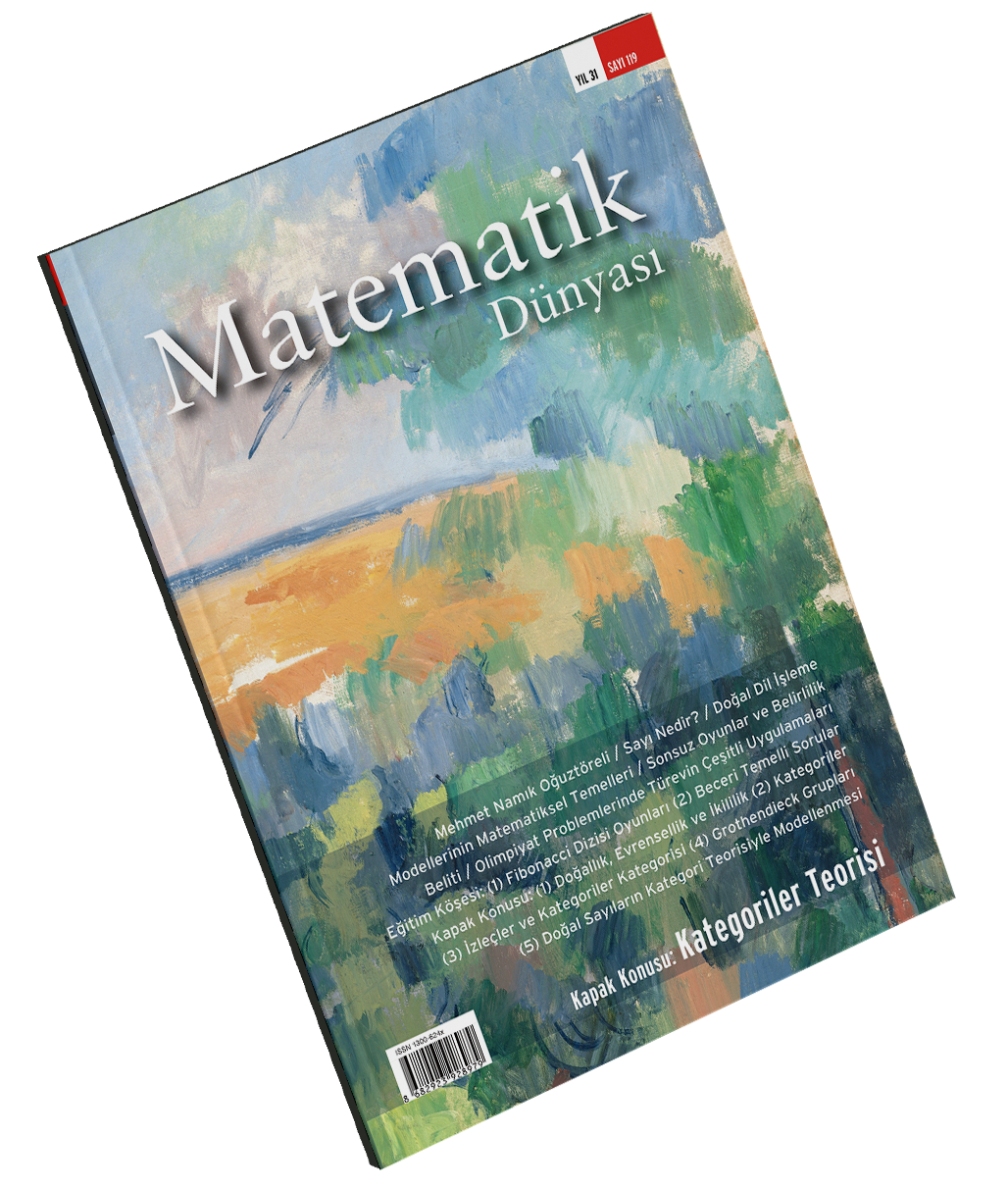Yazar: Sergey Finashin
Yıl: 2022-1
Sayı: 111
Not: Bu yazı Ali Özgür Kişisel’in çevirisiyle Matematik Dünyası 111. sayısında yayımlanmıştır. 111. sayıyı sipariş etmek için tıklayın.
Vladimir Voevodsky, (04.06.1966 — 30.09.2017) an extraordinary mathematician who made remarkable advances in algebraic geometry, was awarded the Fields Medal in 2002 for construction of new cohomology theories for algebraic varieties, which he used to prove the Milnor and Bloch-Kato conjectures, relating K-theory groups of fields and Galois cohomology, which for three decades were the main outstanding problems in algebraic K-theory. These results have striking consequences in several areas, including quadratic forms and the cohomology of complex algebraic varieties, and may have a large impact on mathematics in the future.
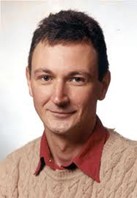
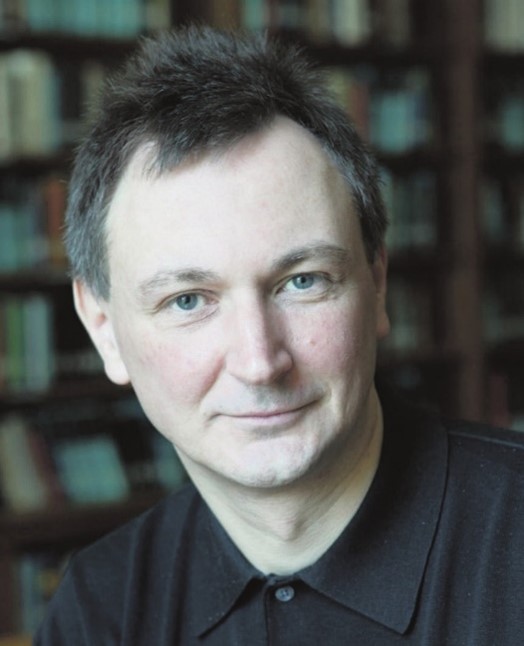
Last years he was working on the foundations of mathematics and computer proof verification. Voevodsky died at age 51 on September 30 in Princeton, where he was Professor in the School of Mathematics at the Institute for Advanced Study, a position he held since 2002.
In addition to the Fields Medal, Voevodsky’s many contributions have been recognized by numerous honors and awards: a Sloan Fellowship from 1996–98, Clay Prize Fellowships in 1999, 2000, 2001, and many National Science Foundation grants for his work. Voevodsky also was named an honorary professor of Wuhan University (2004) and received an honorary doctorate from University of Gothenburg (2016). He was a member of the European Academy of Sciences.
He died at home in Princeton on October 5, 2017, found by the treatment of his ex-wife, who for some time could not contact him and knew about the serious illness; according to her reports, the cause of death could be an aneurysm. He was buried on December 27, 2017 at Khimki Cemetery in Moscow.
Citations of Voevodsky are taken from several interviews: by Elena Novoselova (2002), Olga Orlova (2002), and Roman Mikhailov (2010) (all translated from Russian).
Early years, studying in Moscow and Harward
Born in Moscow on June 4, 1966, in a family of scientists. In his early years Vladimir’s family lived in a “communal apartment” shared by several families (a typical lodging in Soviet times), later they moved to a “private apartment” in the center of Moscow. Vladimir have changed several higher schools and in 1983 started studying at Math Department of Moscow University.
“All the childhood I spent in a Moscow communalka [communal apartment] on the Nogina Square. A room for three people and a lot of remarkable neighbors. A typical picture: I sit at a desk and doing Math, next to me father is watching football, and mother is preparing dinner. Parents are graduates of the Moscow University. Father was a well-known astrophysicist, a lot of time spending at the famous Baksan Neutrino Observatory in Caucasus, mother was working on the nuclear magnetic resonance at the Department of Chemistry. Only recently I have realized how much they loved me, my parents and grandparents. They allowed me absolutely everything: at age of 15 I was travelling to Piter [St. Petersburg] and other cities with the fans of “Spartak” [famous Moscow football team], I like to travel by hitch-hiking. Now, having myself two daughters, I understand how was it hard to tolerate my crazy liberties. You can’t imagine, as I was back I was not hearing a single word of reproach, only a hot soup and warmth.”
His university studies were interrupted several times and according to the formal criteria were “not successful”. He took an “academic vacation” at his first year in the University, during which he was teaching programming languages at some higher school and met there with his first scientific adviser, George Shabat, who has attracted his attention to the Esquisse d’un programme published by Grothendieck.
“In January 1984, Alexander Grothendieck submitted to the French National Centre for Scientific Research his proposal “Esquisse d’un Programme.” Soon copies of this text started circulating among mathematicians. A few months later, as a first-year undergraduate at Moscow University, I was given a copy of it by George Shabat, my first scientific adviser. After learning some French with the sole purpose of being able to read this text, I started to work on some of the ideas outlined there.”
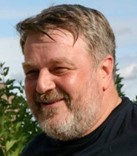
After the academic vacation ended Kapranov still did not attend lectures and was excluded from the University. Later he was restored, but finally was excluded again in 1989 and did not finally graduate.
“I studied a lot, but nevertheless did not graduate from the University. Towards the fourth year I’ve got a feeling that I am simply wasting time there. I did not go to the Fall Semester Exams and was excluded because of academic failure.”[E.N.] It was 1989, everything was collapsing [about destruction of the Soviet Union] and such formalities as a university diploma looked useless.
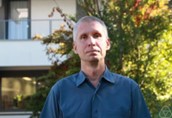
Meanwhile he published 5 mathematical papers, including 2 in leading journals.
In 1988 or 1989, I met Michael Kapranov who was equally fascinated by the perspectives of developing mathematics of new “higher-dimensional” objects inspired by the theory of categories and 2-categories. The first paper that we published together was called “∞-Groupoids as a Model for a Homotopy Category.” In it, we claimed to provide a rigorous mathematical formulation and a proof of Grothendieck’s idea connecting two classes of mathematical objects: ∞-groupoids and homotopy types. Later we decided that we could apply similar ideas to another top mathematical problem of that time: to construct motivic cohomology, conjectured to exist in a 1987 paper by Alexander Beilinson, Robert MacPherson, and Vadim Schechtman.”
The work on ∞-Groupoids develops the idea of Grothendieck to interpret CW-complexes as groupoids from homotopy viewpoint.
Soon Mikhail Kapranov moved to USA to defend PhD (the research was essentially done by that time) at Cornell University, which he did in one year. Meanwhile, at the Harvard University Kapranov has filled the necessary requests and application forms for PhD studies of Voevodsky. In spite of formal absence of a graduation diploma, Voevodsky was accepted.
“In the summer of 1990, Kapranov arranged for me to be accepted to graduate school at Harvard without applying. After a few months, while he was at Cornell and I was at Harvard, our mathematical paths diverged.”
The first three years of PhD studies is normally devoted to taking courses and preparation for the qualifying exams. But Voevodsky has passed these exams just one month after his arrival. So, he could concentrate on his research and earned his PhD already in 1992, under advisor David Kazhdan, with the thesis entitled “Homology of schemes and covariant motives”. But getting accustomed to the style of life in USA was not easy, and Voevodsky’s experience happened to be rather unconventional.
“As for business issues, America impressed me immediately. At the very first day as I came to Harvard, I was given a key from an apartment, from my office and a check for $1000. And I was a usual graduate student, not known to anybody. There were already many mathematicians from Russia in the Department. The Department Chair was Dmitry Kazhdan. He and his colleagues were supporting me while in Russia I was already not able to live, and in America not yet able to live. Once during my first Christmas in Boston, while being heavily drunk, I turned out to be in some black quartier. I was robbed, beaten and thrown away to snow there. This of course added unpleasant impressions, and in general I felt then with a creepy melancholy how much I am missing Moscow courtyards, how disgusting is “their” Chistmas for me. I wanted “my” New Year, with a Christmas tree, mother, and presents. I approached Professor Joseph Bernstein and said that I can’t stay here. He has answered with one phrase: “Well, if you feel that bad here, then go home”. I’ll be forever grateful to him for this. I went to Moscow for four months and he was covering me up in Harvard, preserving my place and stipendium. Then I returned and lived for several monthes right in my office, quickly finishing writing of my thesis. When I was going out in the morning in my training pants to brush my teeth, students who were already coming to lectures watched me with a puzzled look. But the Chairman Kazhdan gave me possibility to finish my work quietly. So, I’ve got PhD without a certificate of higher education, neither in Russia nor in America.” [RM]
As an anecdote Misha Verbitsky (who was also at Harvard at that time) describes it like this:
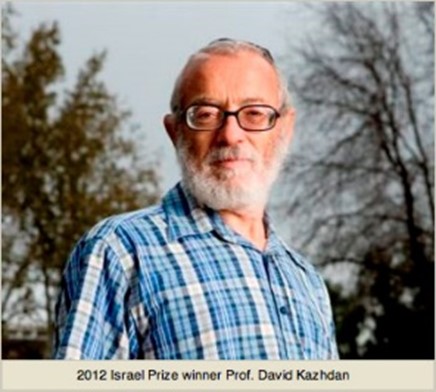
Voevodsky was too lazy to search for an apartment, so he lived in his office (at Harvard each graduate student gets a personal office) and slept on the roof. Unfortunately, the windows of Dean’s office (of Wilfred Schmid) had direct view at that roof. Volodya didn’t adhere to the usual day routine (and didn’t adhere to anything at all), sometimes he slept during daytime including the Dean’s office hours. Some day Schmid looked through the window and saw a roof and Voevodsky was sleeping at the roof. It has to be said, that living and sleeping in the office is a terrible taboo and social stigma in America, so Schmid was outraged. Voevodsky was almost expelled, but everything turned out well, though he was forced to rent an apartment and he has lived there from then on.
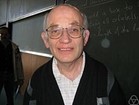
Another university classmate, Yuri Tschinkel, gives the following picture of a deep concentration of Voevodsky on his research:
At Harvard, as we were graduate students, he was working day and night, mostly night. It was hard to approach him with mathematical question or ideas. His usual answer was: “I don’t want to hear about curves, del Pezzo, or K3, nor about cubic fourfolds ! Don’t distract me! – But Volodia, how can you prove anything about varieties if you don’t know examples ? – Examples? What for?
The same year 1992 Voevodsky married mathematician Nadezhda Shalabi. This marriage brought two daughters (Natalia Dalia Shalaby and Diana Yasmine Voevodsky) and ended with a divorce in 2008.
The Way to Fields Medal
After completing PhD, Voevodsky received a one-year post-doc position in the Princeton Institute of Advanced Studies (IAS), and then returned to Harvard University where he stayed in 1993–96 as a junior fellow in the Harvard Society of Fellows, a kind of postdoc position given every year for 8 selected candidates.
In his thesis Voevidsky developed a construction associating to every scheme a triangulizable category and a covariant functor from the category of schemes.
This construction has all properties of a homology theory thus giving a new possibility to work with schemes (and in particular, algebraic varieties) using techniques of algebraic topology. Using this machinery, Voevosky approached to solving the key problems of algebraic K-theory and elaborating the details of motivic cohomology. Together with Andrei Suslin and Eric Friedlander, Voevodsky developed an approach to motivic cohomology that relied on a paper, “Cohomological Theory of Presheaves with Transfers (1992-93) by Voevodsky.
I concentrated my efforts on motivic cohomology and later on motivic homotopy theory. My notes dated March 29, 1991, start with the question “What is a homotopy theory for algebraic varieties or schemes? The field of motivic cohomology was considered at that time to be highly speculative and lacking firm foundation. The groundbreaking 1986 paper “Algebraic Cycles and Higher K-theory” by Spencer Bloch was soon after publication found by Andrei Suslin to contain a mistake in the proof of Lemma 1.1. The proof could not be fixed, and almost all of the claims of the paper were left unsubstantiated.”
Some history of the concept of motives was presented in Voevodky’s paper “Homology of Schemes” in Selecta Mathematica (1996):

The word “motive” was introduced by A. Grothendieck almost thirty years ago to denote objects of the hypothetical semi-simple Q-linear abelian category where the “universal” cohomology theory on the category of smooth projective algebraic varieties takes values. Some fifteen years later the Grothendieck’s idea was developed further by P. Deligne, A. Beilinson, S. Lichtenbaum and others to accommodate all algebraic varieties. These new “motives” were called “mixed motives” after the mixed Hodge structures and old Grothendieck’s motives were renamed into “pure motives”. For all these years the theory of motives was one of the most important unification concepts in algebraic geometry. In its modern form it gives a very coherent picture of how cohomology theories on the category of algebraic varieties should behave. In particular, it provides a natural “explanation” for many apparently unrelated conjectures such as the Bloch-Kato conjecture in the Etale cohomology, the Quillen-Lichtenbaum conjecture and the Beilinson-Soule vanishing conjecture in the algebraic K-theory, the Bloch conjecture on zero cycles and the Grothendieck standard conjectures in the theory of algebraic cycles, etc.
Unfortunately, until very recently, the theory of motives and especially the theory of mixed motives remained almost totally hypothetical. While quite a few results which confirmed the feeling that such a theory should exist were obtained, no candidates for the category of mixed motives over an arbitrary field were suggested and none of the “standard conjectures” were proved.
Then Voevodsky explains his approach and goals as follows:
This paper is the first one in a series of related papers where we try to develop techniques necessary to construct the theory of (mixed) motives. The fundamental difference of the approach considered here with the one usually used is that we construct a triangulated category of mixed motives instead of the abelian category required by the standard conjectures. This basically means that the original problem is divided into two independent parts — to construct the triangulated category and prove its basic properties and to show that this triangulated category is in fact the derived category of an abelian one. An important feature of this approach is that the construction of a triangulated category of mixed motives is a much more accessible problem that the construction of an abelian one. On the other hand many of the “motivic conjectures” do not require us to pass to the abelian level and can be seen as particular cases of certain basic properties of this triangulated category itself. Moreover, it can be shown that if we are working with integral or finite coefficients instead of the rational ones then the abelian category of mixed motives satisfying “standard conjectures” suggested by A. Beilinson does not exist and therefore the triangulated category is in this case the natural object to work with.
In 1996–97 Voevodsky stayed at Harvard as a visiting scholar, and meanwhile has received a position at the Max-Planck Institute in Bonn for 1996–97. He was also invited to work as an Associate Professor at Northwestern University in 1996–98, where he worked in cooperation with the top experts in algebraic K-theory, Andrei Suslin and Eric Friedlander.
In 1996-98 together with Fabien Morel, Voevodsky constructed a theory of A1-homotopy, the main idea of which was to replace a unit interval in the definition of homotopy (that is not an algebraic variety) with an affine line, to allow a complete algebraization of the homotopy theory. The corresponding works Voevodsky presented in a plenary talk “A1-homotopy” at the International Congress of Mathematicians (ICM-1998) in Berlin.
In 1996 Voevodsky presented a preprint with his first proof of the Milnor Conjecture that was the main problem of the Milnor K-theory. According to it there exist an isomorphism between the Milnor rings and the groups of étale cohomology for every field of characteristic other than 2. The proof, in addition to his own inventions and theory of A1-homotopies, essentially uses results of Merkuriev, Suslin, Friedlander and Rost.
In spite of general recognition of this result in the end of 1990s and getting Fields Medal for the proof of Milnor’s Conjecture, the final version that eliminates all the defects in the proofs was published only in 2003.
The news that Voevodsky is awarded by a Fields medal reached him in the following way:
The way I learned about it, I’ve got a mail in my mailbox from my academic assistant, which said “the director wants to see you at 11am”. It was very short, it could be anything at all, it could be something negative, it was at all not obvious what was it going to be. When I came to his office, he said “I want to let you know that you have been awarded by Fields Medal, and congratulations”, and I said “thank you” or something like that, and he said “also thank you” and kind of showed me the door…
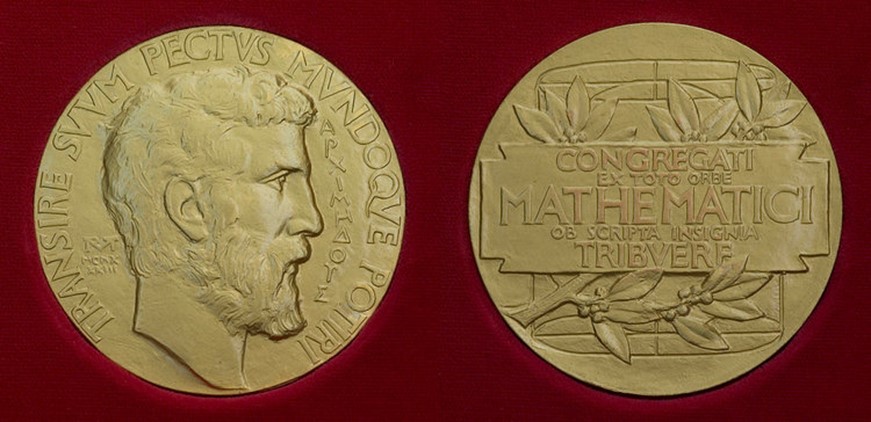
Voevodsky returned to the Prinston IAS as a long-term Member in 1998, where in 1999–2000 he gave a series of twenty lectures covering the foundations of the theory of motivic cohomology that he had developed with Suslin and Friedlander, subsequently published by Princeton University Press as Cycles, Transfers, and Motivic Homology Theories. In January 2002, a few months before getting Fields Medal, Voevodsky became a permanent Professor of IAS.
From an interview with G.Shabat:
What he got a Fields Medal for is in fact an easy application of the theory he constructed. What is much more important is the theory itself!
P.Deligne has remarked:
My feeling is that we have not yet digested those his constructions he did to reach this conjecture, and also what does it really mean, this relation between Milnor’s K-theory and l-cohomology of Fields.
Mathematical Subject Classification assigned a separate code 14F42 to the theory of motivic cohomology in 2000, and in 2010 added there also the theory of A1-homotopy under the name “theory of motivic homotopy”.
In the late 1990s Voevodsky approached to solution of the Bloch-Kato problem, for which Milnor’s Conjecture was just a special case.
First, it was needed to proof a generalization of the Milnor Conjecture known now as the Block-Kato Conjecture. The main ideas of such a proof were stated by me in the end of 1996, about the same time as I have written the first complete version of the proof of Milnor’s Conjecture. In the approach that I invented for the proof of Bloch-Kato there were several problems. It depended, first, on some “sub-conjecture” that was generalizing one result of Marcus Rost, and second, on elaboration of much more advanced concepts in the motivic homotopy theory than those sufficient for the proof of Milnor’s Conjecture. It was clear that the first could be most probably done by Markus himself, but I will need to do the second. Finally, the first was completed in 2007 or 2008 by Suslin, Zhuhovitsky and Veibel following the sketches of Markus. And I finished all the preliminary work and the proof itself only in February 2010. This was very difficult. In fact, it was 10 years of technical work on a topic that did not interest me during the last 5 of these 10 years. Everything was done only through the willpower.
New horizons after Fields Medal
Since 1997, I have already realized that my main contribution to the theory of motives and motivic cohomology was done. Since that time I have been very conscious and actively looking for a topic that I will deal with when I fulfill my obligations related to the Bloch-Kato Conjecture. I quickly realized that if I wanted to do something really serious, then I should make use of the most of my accumulated knowledge and skills in mathematics.
While working in Princeton, he turned to mathematical biology in terms of historical genetics. Another project was probability theory reformulated in terms of category theory. Both projects were not successful.
Since childhood I have been interested in natural sciences (physics, chemistry, biology), as well as in the theory of computer languages, and since 1997, I have read a lot on these topics, and even took several student and post-graduate courses. In fact, I “updated” and deepened the knowledge that had to a very large extent. All this time I was looking for that I recognized open problems that would be of interest to me and to which I could apply modern mathematics. As a result, I chose, as I now understand incorrectly, the problem of restoring the history of populations according to their modern genetic composition. I took on this task for a total of about two years, and in the end, already in 2009, I realized that what I was inventing was useless. In my life, so far, it was, perhaps, the greatest scientific failure. A lot of work was invested in the project, which completely failed. Of course, there was some benefit, of course – I learned a lot from probability theory, which I knew badly, and also learned a lot about demography and demographic history.
As for mathematics, Voevodsky had a growing concern because of errors in mathematical works, his own and of other mathematicians. During lectures in IAS in 1999-2000, Voevodsky identified a mistake in the proof of a key lemma in one his paper. Furthermore, in 1998, Carlos Simpson constructed a counterexample to one of the basic constructions in the “∞-groupoids” paper of Voevodsky and Kapranov, which ruined their main result. They did not initially recognize that flaw, and Simpson’s article was not accepted in journals; only in 2013 Voevodsky confirmed Simpson’s arguments. He posed as a general significant problem
the complication of pure mathematics, which leads to the fact that, sooner or later, the articles will become too complicated for detailed verification and the process of accumulating undetected errors will begin. And since mathematics is a very deep science, in the sense that the results of one article usually depend on the results of many and many previous articles, this accumulation of errors for mathematics is very dangerous.
This motivated Voevodsky to switch attention to the foundations of mathematics and computer verification of proofs.
Who would ensure that I did not forget something and did not make a mistake, if even the mistakes in much more simple arguments take years to uncover? It was clear that the only solution is to create a language in which mathematical proof can be written by people in such a form that it can be checked with a computer. Up until 2005, it seemed to me that this task is much more complicated than the task of historical genetics, which I was engaged in. In many respects this feeling was the result of an established and very widespread among mathematicians’ opinion that abstract mathematics cannot be reasonably formalized so accurately that it is “understood” by the computer.
In 2005, I managed to formulate several ideas that unexpectedly opened up a new approach to one of the main problems in the foundations of modern mathematics. This problem can be formally stated: how to correctly formalize the intuitive understanding that “identical” mathematical objects have the same properties? Arguments based on this principle are very often used in modern mathematical proofs, but the existing foundations of mathematics (Zermelo-Fraenkel set theory) are completely unsuited for the formalization of such arguments. I was very familiar with this problem and thought about it back in 1989, when Misha Kapranov and I worked on the theory of poly-categories. Then it seemed to us that it was impossible to solve it. What I was able to understand in 2005, combining the ideas of homotopy theory (branch of modern topology) and type theory (branch of the modern theory of programming languages) was absolutely amazing, and it opened up real possibilities for constructing the very language in which people can write proofs, which can check the computer.
In the period of 2006-2007 Voevodsky was completely switched off from research and concerned about esoteric experiences.
Further there was a big break in my mathematical activity. From June 2006 to November 2007 I did not do math at all. . . Now, thinking about that happening to me at this time, I often recall the story of A. and B. Strugatsky “For a billion years before the end of the world.” A lot of external and internal events happened to me, after which my point of view on the questions of the “supernatural” has changed significantly. What happened to me during these years, perhaps, can be compared most closely to what happened to Karl Jung in 1913-14. Jung called it “confrontation with the unconscious”. I do not know what to call it, but I can describe it in a few words. Remaining more or less normal, apart from the fact that I was trying to discuss what was happening to me with people whom I should not have discussed with, I had in a few months acquired a very considerable experience of visions, voices, periods when parts of my body did not obey me and a lot of incredible accidents. The most intense period was in mid-April 2007 when I spent 9 days (7 of them in the Mormon capital of Salt Lake City), never falling asleep for all these days.
Return to research activity brought about new ambitious ideas and approaches.
First, I worked partially on the ideas related to historical genetics and finishing the work on the Bloch-Kato conjecture. To the ideas connected with the computer verification of evidence, I returned only in the summer of 2009, when it became finally clear to me that with historical genetics nothing happens. And just a few months later there were two events that advanced these ideas from general hints, which I thought I would have to work on for more than a year, to the stage at which I was able to state that I had come up with new foundations of mathematics that would solve the problem computer verification of evidence. Now this is called “univalent bases of mathematics” and they are studied by both mathematicians and theorists of programming languages. I have almost no doubt that these grounds will soon replace the theory of sets and that the problem of the language of abstract mathematics that will be “understood” by computers can be considered basically solved.
Foundations of Mathematics and Computer Proofs
At the end of 2005, Voevodsky discovered a possibility of describing higher groupoids by means of so called λ-calculus used by some automatic proof systems. In 2006 he has chosen the Coq system for further experiments. The same year he published the first notes applying geometric concepts to the theory of types (related to the computer proofs). In 2009 he postulated the axiom of uniformity, affirming the equality between objects between which equivalence can be established. After the final proof of the Bloch-Kato hypothesis in 2010 he completely plunged into a new direction, putting forward a program of univalent foundations.
The first examples of the languages of the class I work with were created in the late 1970s and are known as “Martin-Lof type theories”. Surprisingly, languages were, software systems using these languages were created and even became popular (especially the “Coq” system that the French created), but there was no understanding of what these languages allow to speak. It turned out that only a very small part of the language’s possibilities is used, one that, as now it is clear, allows talking about sets. Language as a whole allows you to talk about homotopic types of any level of complexity. Although in mathematics traditionally a set of results is established for classes of equivalent objects, “up to …” – isomorphism, homeomorphism, homotopy, – it is considered that the introduction of the base-level unification axiom has become a revolutionary innovation, besides providing many technical effects.
A significant team of specialists in mathematical logic, category theory, and automatic proof systems has gradually joined the program. In 2012–13, Voevodsky organized a special year in the School that focused on univalent foundations of mathematics, which resulted in a group of two dozen mathematicians writing a six-hundred-page book in less than six months. Voevodsky said that the main goal of his most recent work was “to advance the mathematical theory of dependent type theories to the level where it can be used for rigorous study of the complex type theories that are in use today and of the even more complex ones that will appear in the future.” Dependent type theories appear mostly in computer programs that use such theories as their foundation. Voevodsky formalized the mathematics in his papers using the proof assistant Coq and the UniMath library, which contains formalized mathematics for Coq of which Voevodsky was a co-founder and primary developer.
